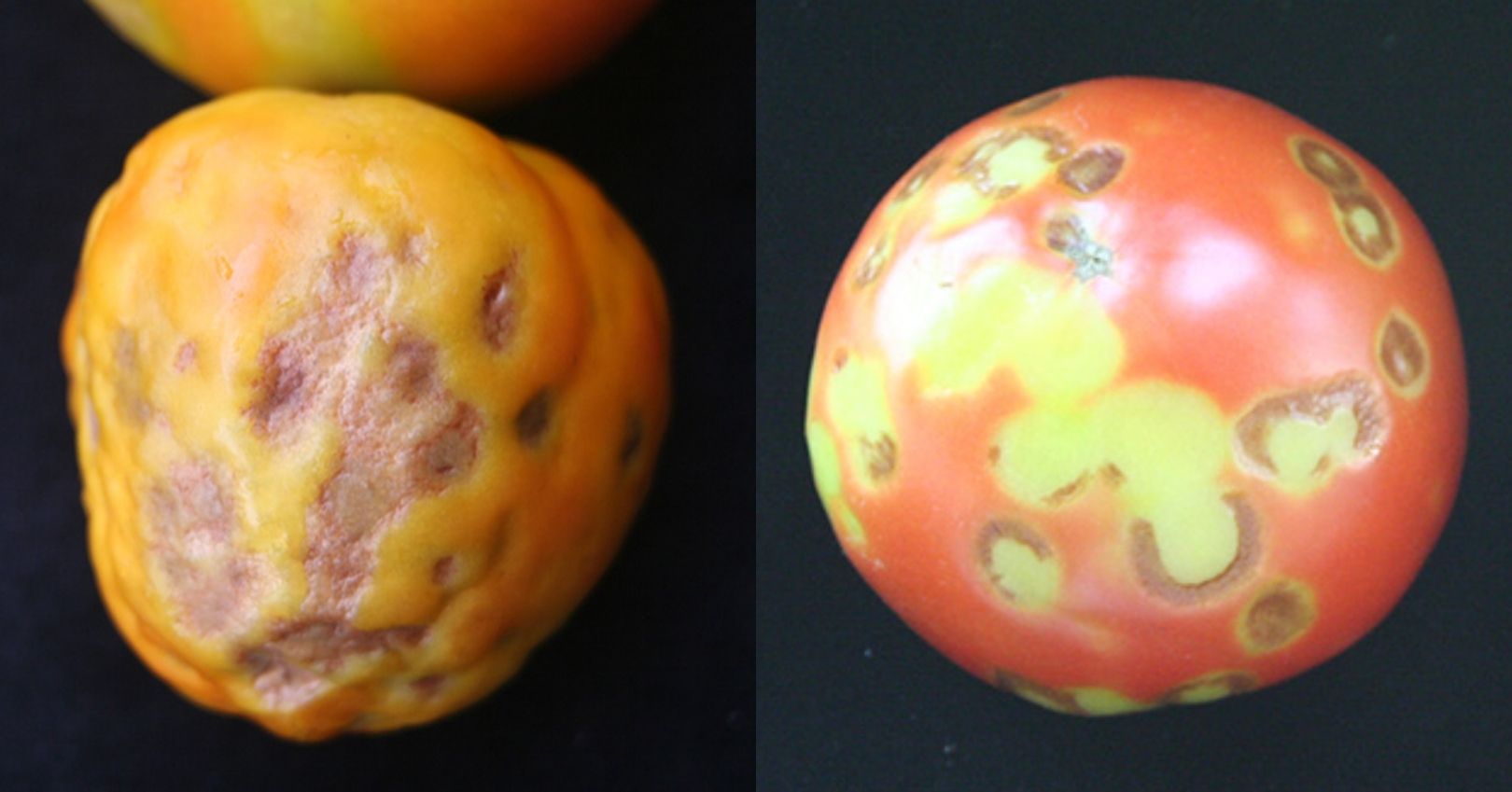Tobacco Mosaic Virus (TMV)
Tomato Mosaic Virus (ToMV)


Casual Agent
(ToMV) are two very closely related viruses with similar symptoms. Antibody-based molecular testing is necessary for accurate identification. TMV and ToMV are two of only a few plant viruses that are not transmitted by insects. In contrast to many other plant viruses, TMV and ToMV can survive for up to 50 years in plant debris and for weeks to months on trellises or wooden stakes.
Symptoms
Infected eggplants have small leaves with mosaic patterns.
On pepper, leaves will grow in the shape of an oak leaf (jalapeño peppers) or show mosaic patterns (other pepper types). Fruit is often smaller, distorted and has blotches and/or necrotic spots.
Tomato foliage displays mosaic symptoms that can range from a faint light and dark green pattern to a darker yellow and green pattern. Mosaic symptoms depend on plant cultivar and temperature. Symptoms are fainter at high temperatures. Other foliar symptoms include leaf distortion (fan shape) and occasionally leaf curling. In some cases, fruit symptoms will not occur. In other cases, yellow rings or brown sunken lesions will show on ripe fruit, or the parenchyma layer of cells inside the fruit will turn brown. Because fruit symptoms can be mistaken for TSWV infection, the virus should be identified by a plant diagnostic lab. Samples can be submitted to the Utah Plant Pest Diagnostic lab (UPPDL) for identification at utahpests. usu.edu/uppdl.
Disease Cycle
TMV is transmitted by artificial grafting, and by contaminated seed. The virus can be spread on pruning tools or by bare hands, such as during sucker pruning or staking. The virus can also be spread by growers’ hands that handled tobacco cigarettes or chew that is infected with TMV. If seedlings are planted in pots or beds where previously infected plants grew, they can become infected. A common mode of TMV infection in greenhouses is through contaminated seed. Once the virus has entered the plant, through wounds as small as torn plant hairs, it spreads though the entire plant, including roots.
Management
Tobacco and tomato mosaic virus are difficult to control, as they can survive harsh conditions for many years. Once a plant is infected, there is no cure.
- Remove infected plants immediately. Do not compost infected plants due to the longevity of the virus.
- Use certified disease-free seed. When preserving seed from your own plants, do not keep seed from infected plants.
- Disinfect tools that came into contact with infected plant material. Reports from Florida indicate that dipping contaminated tools for one minute in a 20% powdered milk solution will kill the virus.
- Use new potting soil, pots, and string every time, when growing your own transplants, to minimize infection.
- Use resistant varieties.
◦ TMV resistant eggplant varieties including ‘Epic’, ‘Dusky’ and ‘Imperial’ (http://vric.ucdavis.edu/ pdf/eggplant.pdf). ◦ TMV or ToMV resistant pepper varieties include ‘Telestar’, ‘Crusader’ and ‘Paladin’.
◦ There are many TMV and ToMV resistant tomato varieties (vegetablemdonline.ppath.cornell. edu/Tables/TomatoTable.html). Most heirloom varieties are susceptible to both viruses. The correct identification of the virus is necessary if resistant varieties are to be used. Some varieties are only resistant to one of the two viruses. Break-down in resistance of some tomato varieties to the viruses has occurred.

